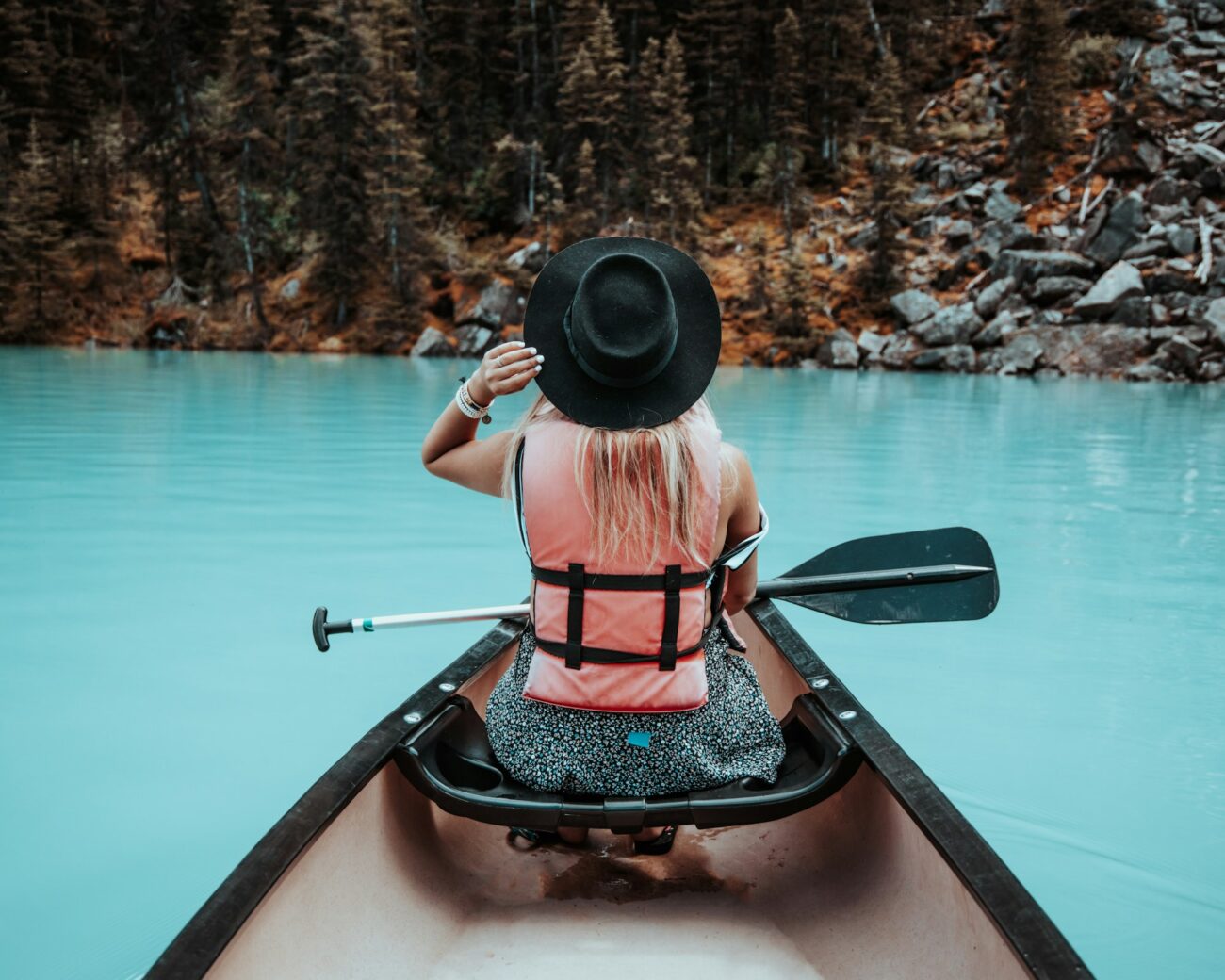Paddling in fast-moving water offers an exhilarating adventure that combines the tranquility of nature with the thrill of navigating dynamic waterways. Whether you’re kayaking through rapids, canoeing down a swift river, or paddleboarding in current, the experience can be both rewarding and challenging. However, the power of moving water should never be underestimated. Each year, even experienced paddlers encounter dangerous situations that could have been avoided with proper preparation and knowledge. This guide offers thirteen essential tips to help you safely enjoy paddling in fast-moving water while minimizing risks and maximizing enjoyment. By following these guidelines, you’ll be better equipped to read the water, respond to challenges, and return home with nothing but great memories and stories to share.
Understand the River Classification System
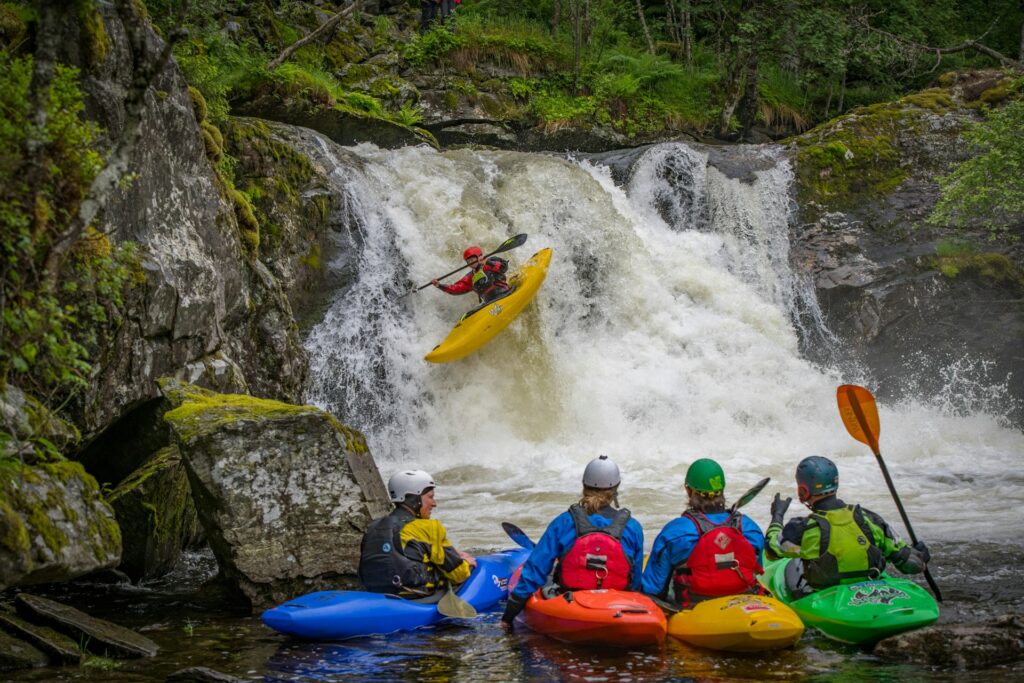
Before embarking on any fast-water paddling adventure, familiarize yourself with the international river classification system, which rates rapids from Class I (easy) to Class VI (extreme and often unrunnable). This standardized system helps paddlers assess the difficulty and potential hazards of a waterway before putting in. Class I features moving water with small waves and few obstacles, making it suitable for beginners, while Class III introduces moderate, irregular waves and narrow passages that require complex maneuvering. Never paddle a river above your skill level, and remember that water levels can change a river’s classification – a Class II section can quickly become Class III or IV after heavy rainfall. Research your intended route thoroughly, speaking with local paddling shops or experienced paddlers who know the area.
Never Paddle Alone
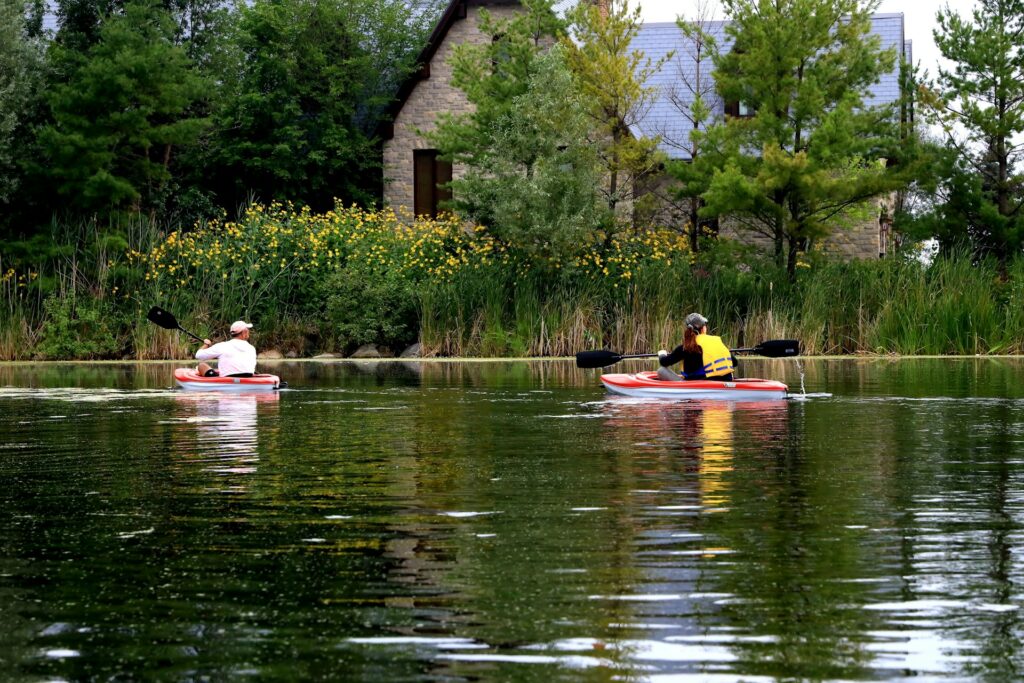
The buddy system isn’t just for swimming pools – it’s a critical safety practice for paddling in fast-moving water. Always venture out with at least one other experienced paddler who can assist if you capsize or encounter difficulties. In swift water, a solo paddler in trouble may have no recourse if pinned against an obstacle or separated from their craft. Your paddling partners can help with rescues, first aid, or sending for help if necessary. Additionally, paddling in a group allows for collective decision-making when confronting uncertain conditions or obstacles. Even expert paddlers follow this rule, recognizing that no amount of skill eliminates the inherent risks of moving water. If you must paddle alone, leave a detailed float plan with someone reliable, including your put-in and take-out points, expected return time, and the names of all paddlers in your group.
Wear Appropriate Safety Gear
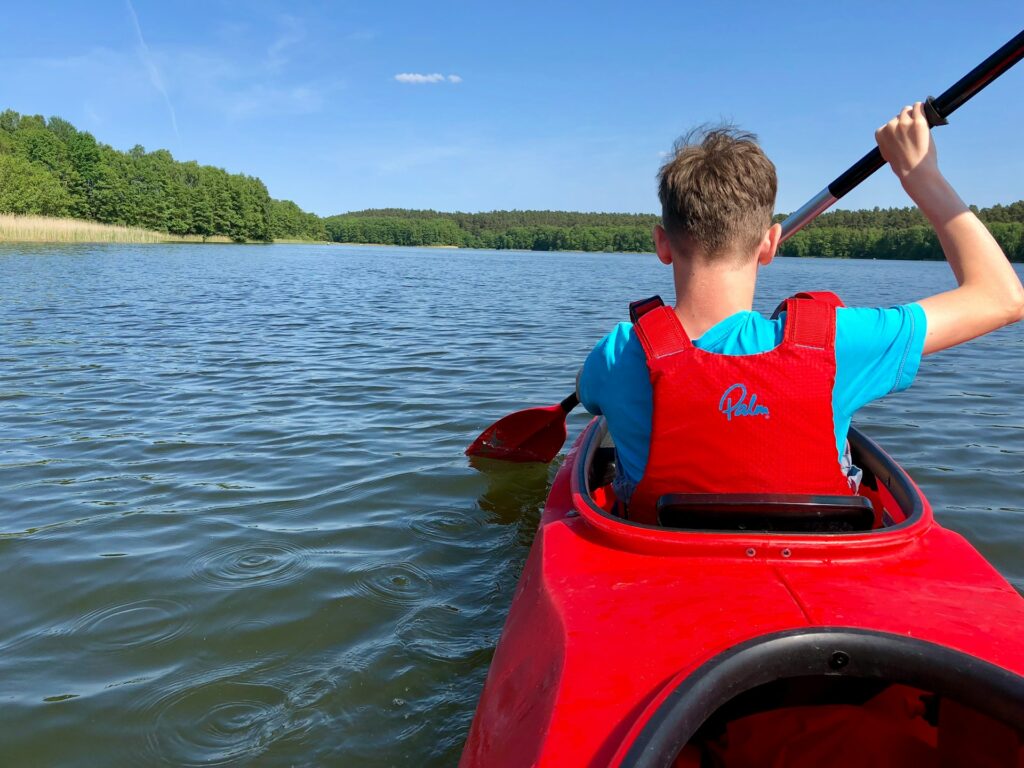
Proper safety equipment is your last line of defense when things go wrong on fast-moving water. Always wear a properly fitted personal flotation device (PFD) designed specifically for paddling – no exceptions, regardless of your swimming ability or water conditions. A whitewater helmet is essential for protecting your head from rocks and other obstacles, particularly in rivers with rapids Class II and above. Dress for water temperature, not air temperature, wearing a wetsuit or drysuit when water temperatures fall below 70°F to prevent hypothermia, which can quickly impair judgment and physical capability. Additional essential gear includes a whistle for signaling, a river knife for cutting entangled ropes in an emergency, and a throw bag for rescuing others. Remember that the best safety gear is useless if not worn properly or if left in your vehicle, so develop the habit of gearing up completely before every paddling session.
Learn to Read Water Features
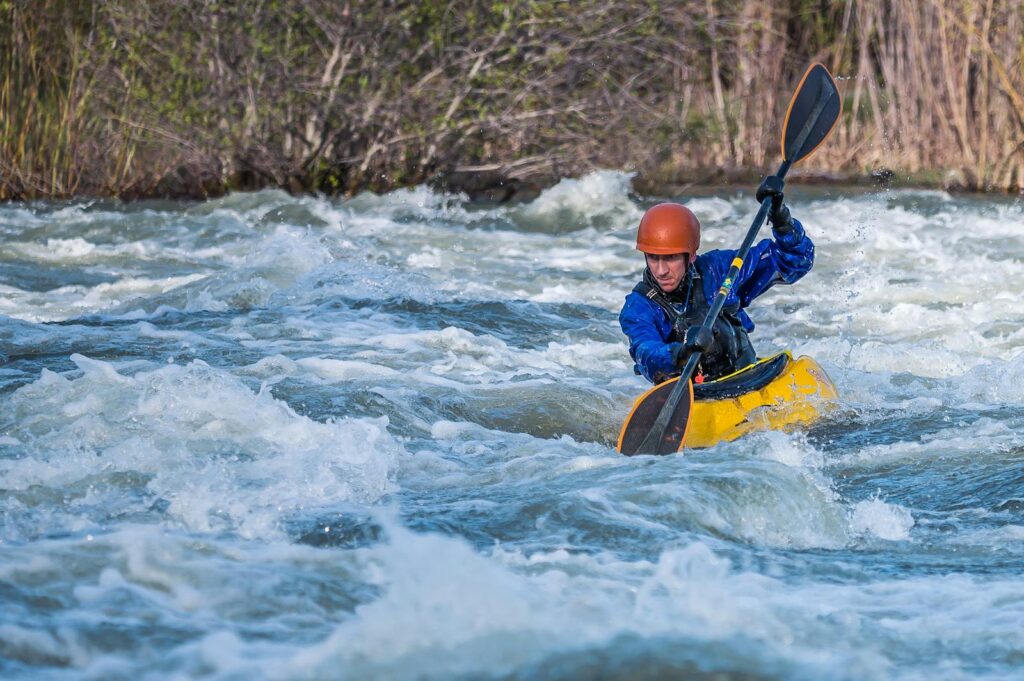
Understanding how to read water features is perhaps the most valuable skill for navigating fast-moving water safely. Learn to identify potentially dangerous features like strainers (partially submerged obstacles that allow water to flow through but can trap paddlers), hydraulics (recirculating currents that can hold boats and swimmers underwater), and undercut rocks (rocks with spaces beneath them where water flows, creating suction). Pay attention to the “V” formations in the water – a V pointing downstream often indicates a clear channel, while a V pointing upstream often signals a rock or obstacle below the surface. Practice identifying eddies, which are calm areas behind obstacles where the current flows upstream, providing safe havens for rest or scouting. Developing this visual literacy takes time, so start by paddling with experienced guides who can point out features and explain their significance before attempting to navigate them independently.
Master Essential Paddling Techniques
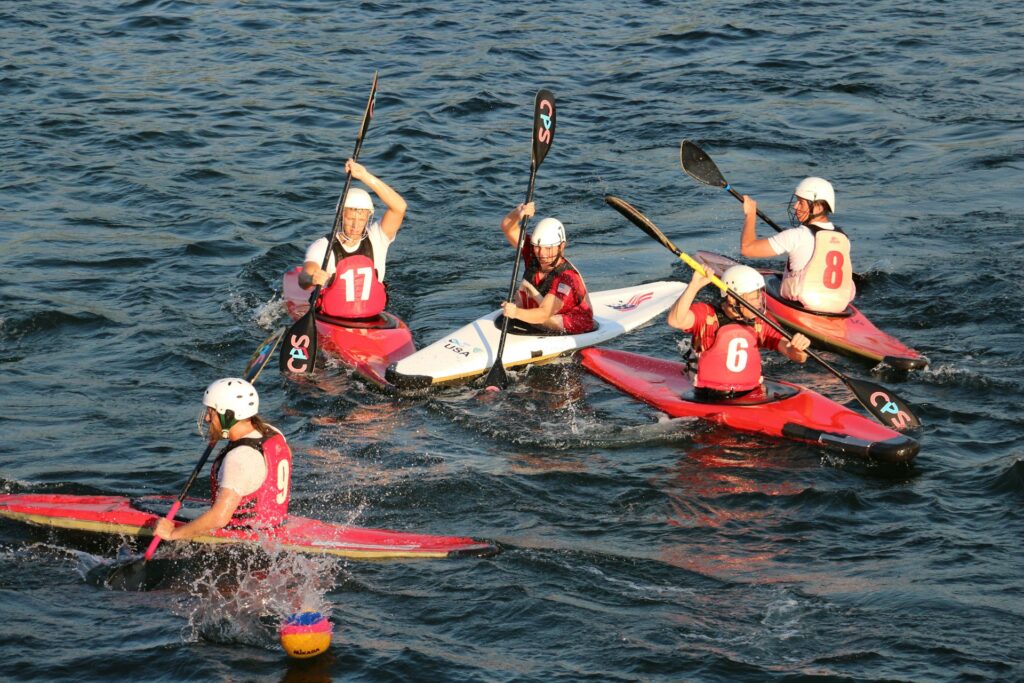
Technical paddling skills are your primary tools for navigating fast water safely and effectively. Practice and master fundamental techniques like the forward stroke, sweep stroke, draw stroke, and brace before venturing into challenging conditions. Learn how to ferry across current by angling your boat and using momentum to move laterally across the river while maintaining control. The eddy turn – entering the calm water behind obstacles – is crucial for resting, scouting ahead, or regrouping with your paddling partners. Practice wet exits and self-rescue techniques in calm water until they become second nature, so you’ll react correctly if you capsize in fast current. Consider taking a formal swift water paddling course from certified instructors who can provide personalized feedback and correction on your technique. Even experienced paddlers regularly refresh these skills, recognizing that muscle memory and proper technique are invaluable when split-second decisions matter.
Scout Unfamiliar Rapids
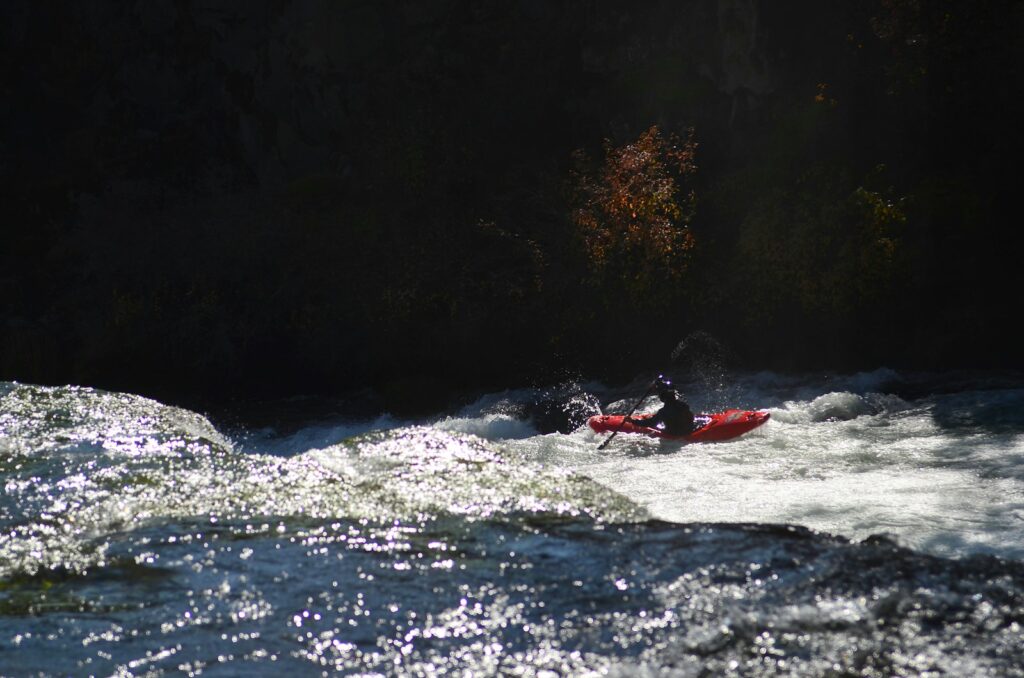
Never paddle blind into unfamiliar rapids or sections of fast water without first scouting from shore. Pull out well above the rapid and walk along the bank to visually inspect what lies ahead, identifying your intended path, potential hazards, and alternative routes if things don’t go as planned. Look for safe exit points and eddies where you can stop if needed. Pay particular attention to horizon lines – places where the water seems to disappear downstream – as these often indicate drops or significant rapids that require careful planning. While scouting, discuss the route with your paddling partners and ensure everyone understands the plan before proceeding. If a rapid looks questionable or beyond your skill level, there’s no shame in portaging (carrying your boat around) the section – experienced paddlers know that portaging is often the wisest choice when conditions create unnecessary risk.
Check Weather and Water Conditions

River conditions can change dramatically with weather, making today’s gentle stream tomorrow’s raging torrent. Always check current water levels, flow rates, and weather forecasts before heading out, and understand how these factors affect your intended paddling route. Many rivers have online gauges that provide real-time data on water levels and flow rates, helping you determine if conditions are within your skill level. Be particularly cautious after heavy rainfall, when rivers can rise quickly and carry dangerous debris. Learn the typical seasonal patterns for your local waterways, recognizing that spring often brings higher, colder water from snowmelt, while summer may feature lower levels that expose new obstacles. Thunderstorms present particular danger, not just from lightning but from flash flooding that can occur miles downstream from the actual rainfall. Develop the discipline to cancel or modify plans when conditions exceed your capabilities – the river will still be there another day.
Establish Clear Communication Signals
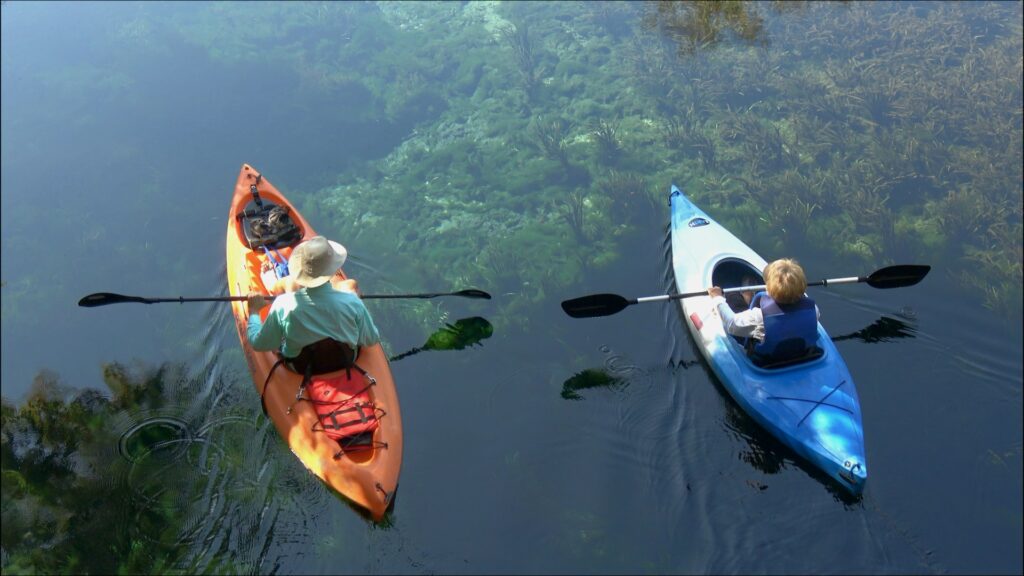
The roar of fast-moving water often makes verbal communication impossible, making visual signals essential for group coordination and safety. Before launching, establish and practice a set of universally recognized paddler hand signals with your group. The most critical signals include “all clear” (one arm raised vertically), “stop” (arm extended horizontally), and “help/emergency” (waving arms overhead). Ensure everyone understands directional signals that indicate which way to proceed through a rapid or around an obstacle. Whistles provide another valuable communication method – typically, one blast means “attention,” two blasts mean “look upstream,” and three blasts signal an emergency requiring immediate assistance. Position more experienced paddlers at the front and rear of your group, creating a “sandwich” formation that keeps less experienced paddlers in the middle where they can receive guidance from both directions. Regularly practice these signals during calmer sections so they become second nature when you need them most.
Maintain Proper Position and Spacing
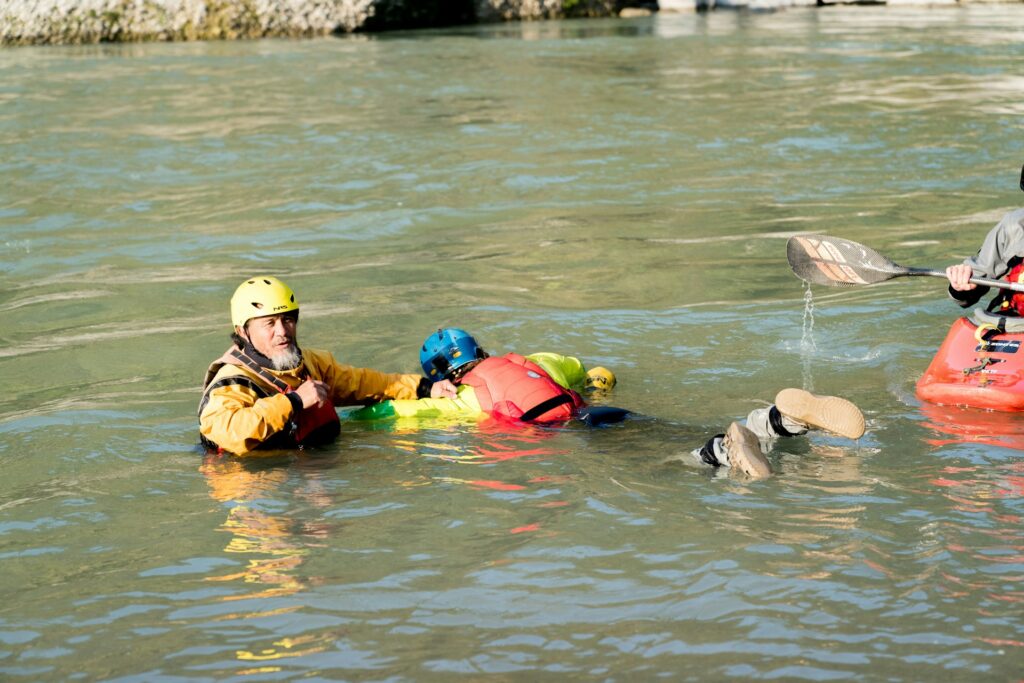
Proper spacing between paddlers creates a safer environment by allowing time for rescue if someone encounters trouble. In fast water, maintain enough distance that you won’t collide with the paddler ahead if they suddenly stop or capsize, but stay close enough to quickly assist if needed – typically about 2-3 boat lengths. Avoid paddling directly behind another boat, instead offset to one side to maintain visibility ahead and create clearer rescue lanes. When approaching rapids, use the “buddy system” where one paddler enters the rapid while another waits in a stable position, ready to assist if needed, then alternating roles. In narrow channels where spacing is difficult, proceed one at a time, with each paddler waiting until the person ahead has safely cleared the obstacle or reached a stable eddy. This disciplined approach to positioning prevents dangerous “pile-ups” where multiple paddlers encounter trouble simultaneously, overwhelming the group’s rescue capabilities.
Prepare for Cold Water Immersion
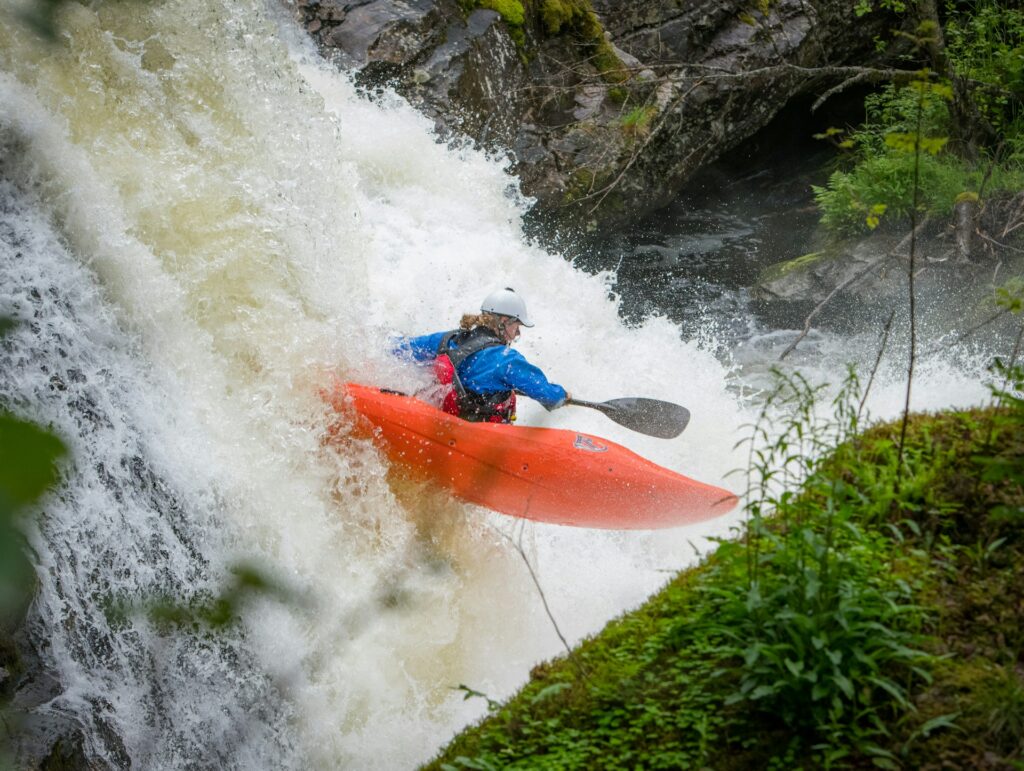
Cold water immersion represents one of the most significant dangers in paddling, capable of incapacitating even strong swimmers within minutes. Water conducts heat away from the body 25 times faster than air, making hypothermia a year-round concern in many waterways. Always dress for immersion in a properly fitted wetsuit or drysuit when water temperatures are below 70°F, regardless of how warm the air temperature might be. Understand the progression of cold water shock, which begins with an involuntary gasping reflex upon immersion that can cause drowning if your head is underwater. This initial shock is followed by the loss of dexterity in fingers and hands within minutes, making self-rescue increasingly difficult. Pack dry clothes in a waterproof bag for after your paddling session, and learn to recognize the signs of hypothermia in yourself and others – confusion, slurred speech, and uncontrollable shivering are early indicators requiring immediate attention.
Know What to Do If You Capsize

Capsizing in fast-moving water is not a question of if, but when for most paddlers, making proper response techniques essential knowledge. If you flip over, maintain the defensive swimming position – floating on your back with feet pointed downstream and toes visible above water, using your legs to fend off rocks while keeping your head above water. Never stand up in fast-moving water deeper than knee height, as your foot could become trapped between rocks (foot entrapment), creating a dangerous situation where the current can push you underwater. If separated from your boat, prioritize your safety over equipment – boats and paddles can be replaced, but you cannot. When feasible, stay with your capsized craft, as it provides flotation and is more visible to rescuers than a swimmer alone. Practice wet exits and self-rescue techniques regularly in controlled environments so these actions become automatic when you’re under the stress of an actual capsize.
Carry Essential Rescue Equipment
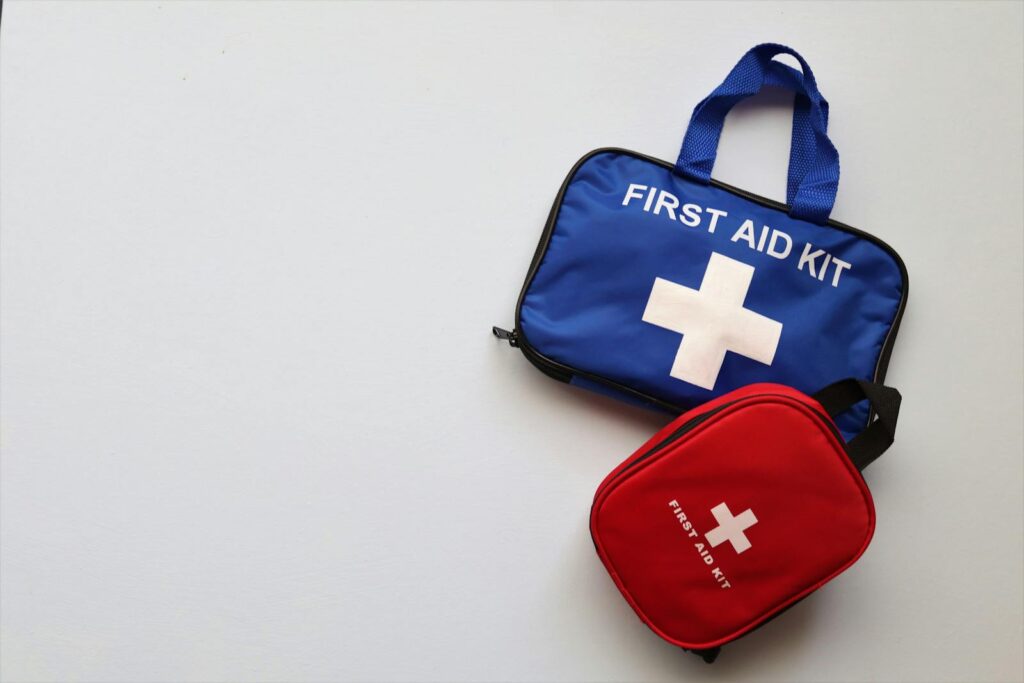
Beyond personal safety gear, proper rescue equipment should be distributed among your paddling group to handle various emergency scenarios. Every group should carry at least one throw bag – a rope stuffed in a bag that can be thrown to a swimmer to pull them to safety – and ensure multiple members know how to use it effectively. Include a first aid kit appropriate for wilderness settings, containing items to address common paddling injuries like cuts, scrapes, and sprains. Carry repair materials suitable for your boat type, such as duct tape, spare plugs for sit-on-top kayaks, or patch kits for inflatable craft. A proper rescue kit should also include a sturdy knife accessible with one hand for cutting entangled ropes, an emergency shelter such as a space blanket or tarp, and fire-starting materials in a waterproof container. These items should be distributed among multiple paddlers rather than all carried by one person, ensuring essential rescue gear remains available even if one boat is lost.
Respect Your Limits and Gradually Progress
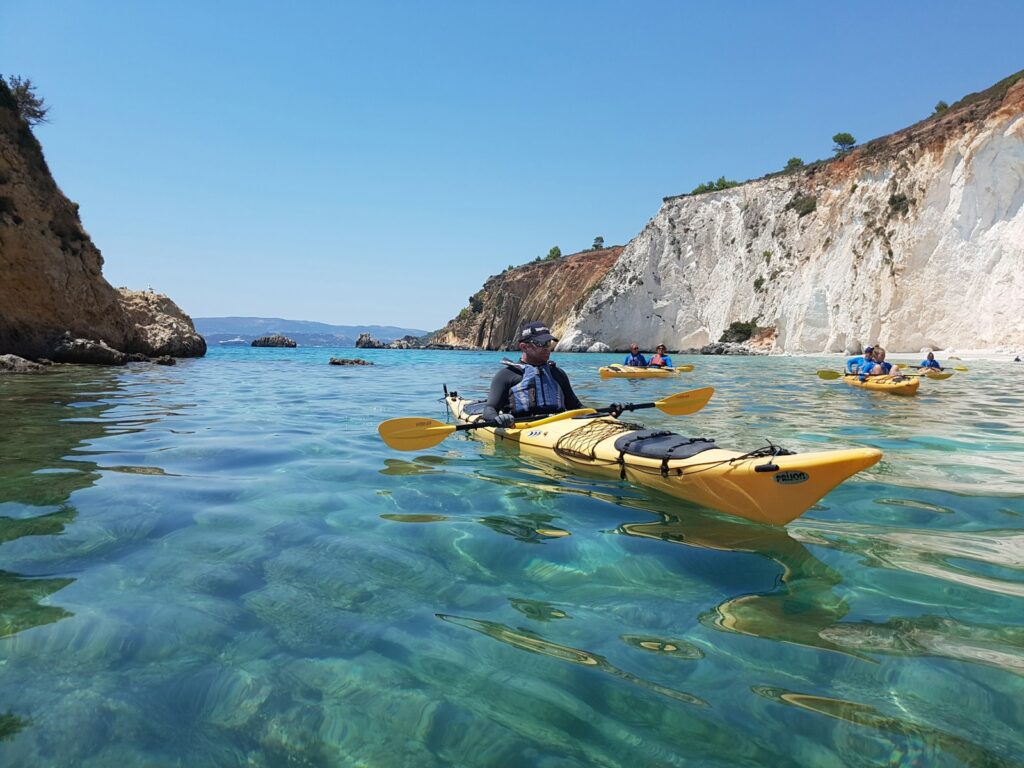
The most important safety tip for paddling in fast-moving water is perhaps the simplest: honestly assess and respect your current skill level. Paddling skills develop progressively, with each level building upon the foundation of the previous one. Begin in calm water to master basic paddle strokes and boat control before gradually progressing to gentle current, then more challenging conditions as your skills improve. Set appropriate challenges that push your abilities slightly without jumping multiple skill levels at once. Remember that factors like fatigue, stress, or changing conditions can effectively reduce your functional skill level on any given day. Listen to that inner voice of caution – if something doesn’t feel right, it probably isn’t, and there’s no shame in choosing an easier route or postponing a challenging paddle. The most experienced paddlers are often the most conservative in their decision-making, recognizing that the river will always be there another day when conditions or skills might be more favorable.
Paddling in fast-moving water delivers unparalleled adventure and connection with nature, but requires respect, preparation, and skill to navigate safely. By understanding river classifications, paddling with companions, wearing appropriate gear, and mastering essential techniques, you’ll be well-positioned to enjoy these dynamic environments while minimizing risks. Remember that safety isn’t just about avoiding danger—it’s about creating the foundation for confidence that allows you to fully appreciate the experience. The most successful paddlers are those who continue learning, maintain a humble attitude toward the power of moving water, and make conservative decisions when uncertainty arises. By implementing these thirteen tips, you’ll develop the skills and judgment needed to safely explore the magnificent world of rivers, streams, and rapids for years to come.

